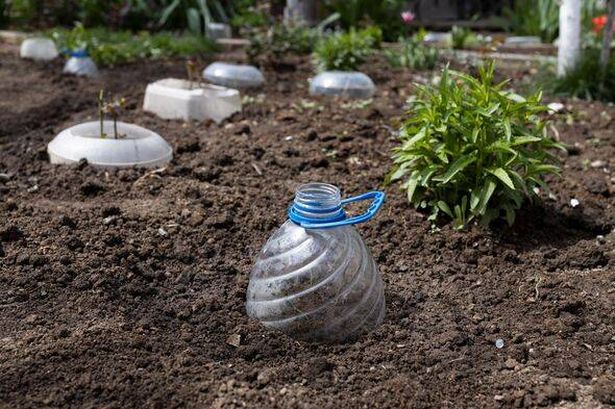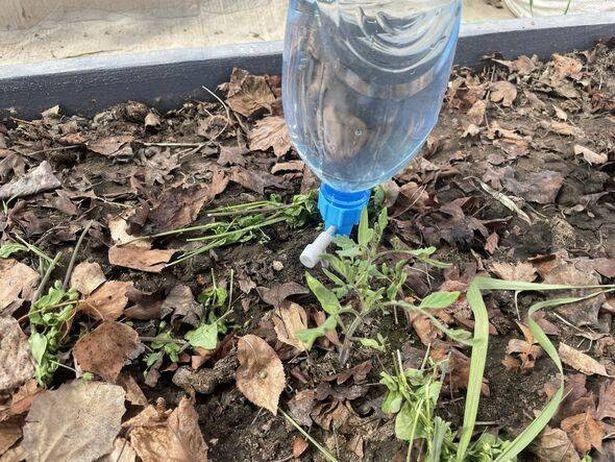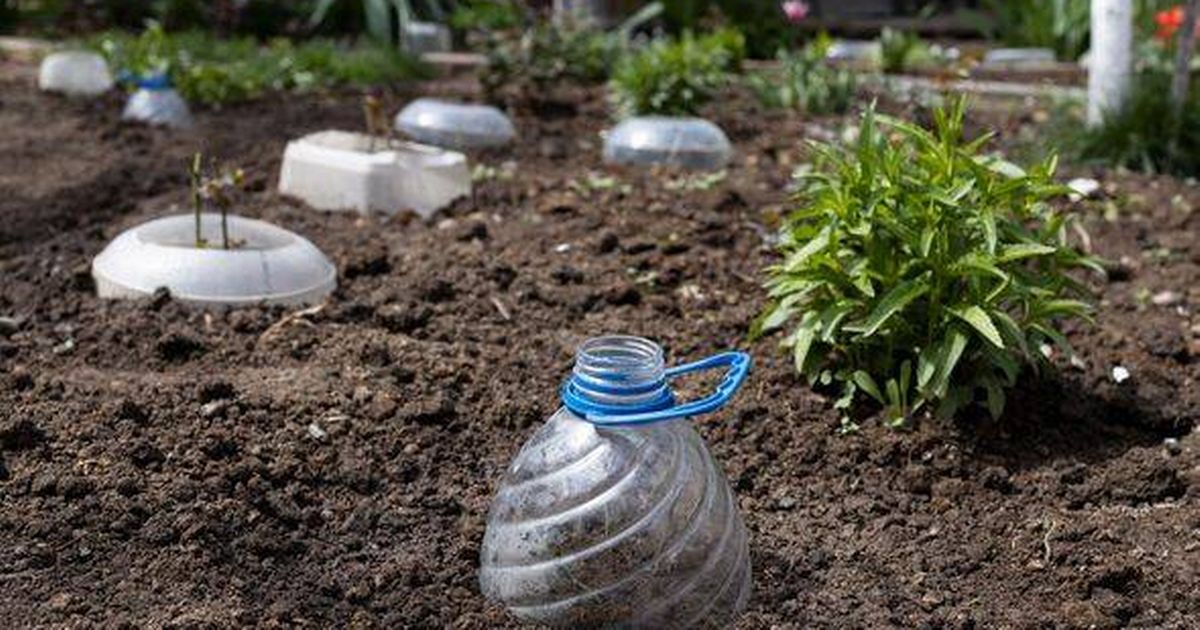There’s a simple trick to save your garden plants from drying out while you’re on holiday Plastic bottles filled with water and buried in the soil can keep plants watered(Image: Getty)
Plastic bottles filled with water and buried in the soil can keep plants watered(Image: Getty)
With hosepipe bans and holidays our garden plants might miss out on the water they need to survive this summer.
And while you can splash out on a fancy irrigation systems to keep your garden watered while you’re on holiday, there’s a much simpler and cheaper solution that’s probably already in the recycling bin. With a bit of adaptation plastic water bottles can be used to create a simple drip feed.
It also means you are doing your bit to stop single use plastics. Slow release watering directly at the root zone helps a plant develop deep, vigorous roots, while replenishing the moisture aerial plant tissues lost to transpiration. It can also prevent many diseases that spread in the splashes of water.
Crafty gardeners are always coming up with new ways to make DIY slow release watering systems. Whether made with PVC pipes. a five-gallon bucket, milk jugs, or plastic soda bottles, the concept is pretty much the same.
To keep plants watered while on holiday using plastic bottles, you can create a simple slow release irrigation system.
 Here a plastic bottle is being used to create a simple drip irrigation system.(Image: Getty)
Here a plastic bottle is being used to create a simple drip irrigation system.(Image: Getty)
Water or soda bottle irrigation allows you to repurpose all your used soda or other beverage bottles, saving space in the recycling bin. When making a slow release soda bottle irrigation system, it is recommended that you use BPA-free bottles for edibles, such as vegetable and herb plants. For ornamentals, any bottle can be used.
Firstly, choose a plastic bottle of appropriate size for your plant’s water needs. Clean the bottle thoroughly to remove any sugar residue that might attract garden pests and remove any gluey labels.
Sign up to our Manchester property newsletter here
Next use a nail and hammer or a sharp object (like a box cutter or push pin) to make several small holes in the bottle cap. Start with a few holes and add more if the water drains too quickly.
Dig a hole near the plant, deep enough to bury the bottle up to its neck, with the cap facing down. Make sure the holes in the cap are facing the plant.
Fill the bottle with water and screw the cap on tightly. Bury the bottle in the hole, ensuring the neck and cap are submerged.
Join the Manchester Evening News WhatsApp group HERE
The tighter the cap is screwed on, the slower the water will seep out of the holes.To increase flow, partially unscrew the cap. The cap also helps prevent mosquitoes from breeding in the plastic bottle and keeps the soil out.
Observe the soil moisture and adjust the number of holes or the depth of the bottle to control the water flow. For longer holidays, you might need to refill the bottle or use a larger bottle.
